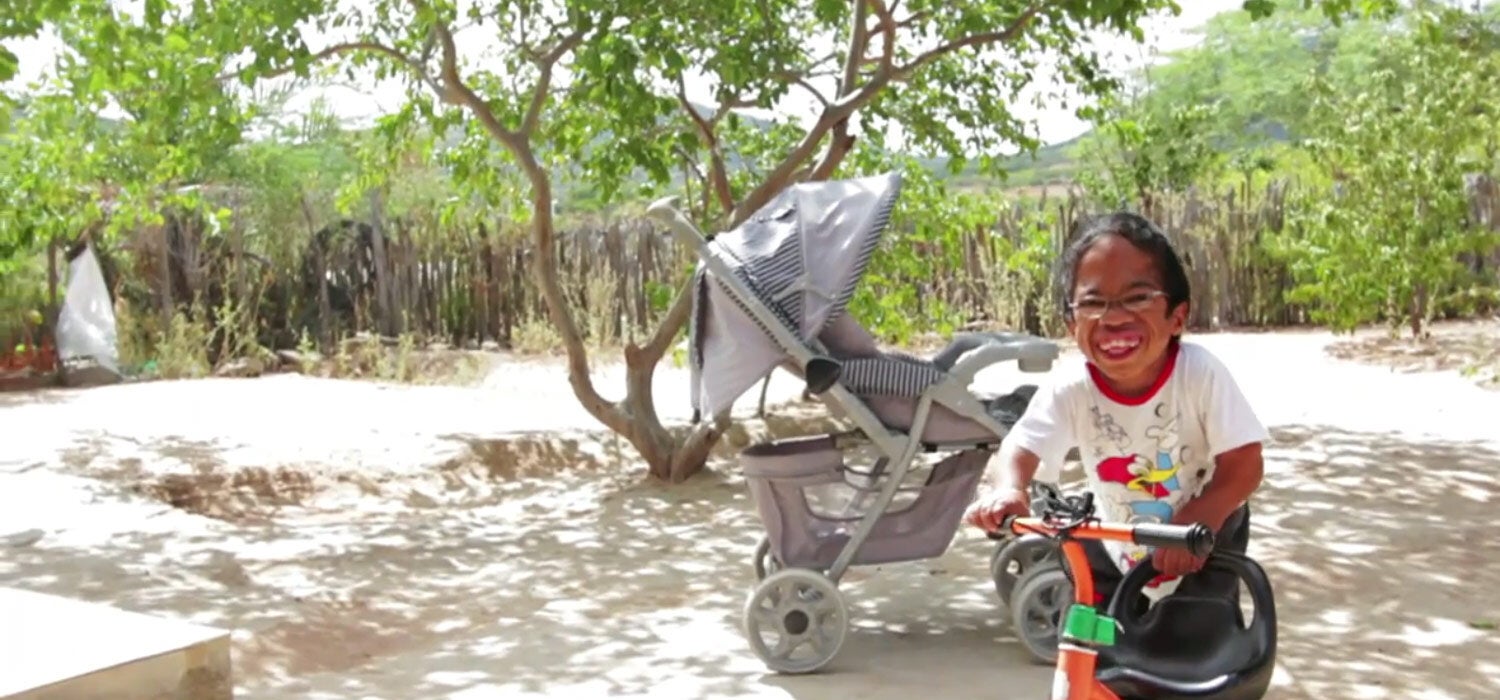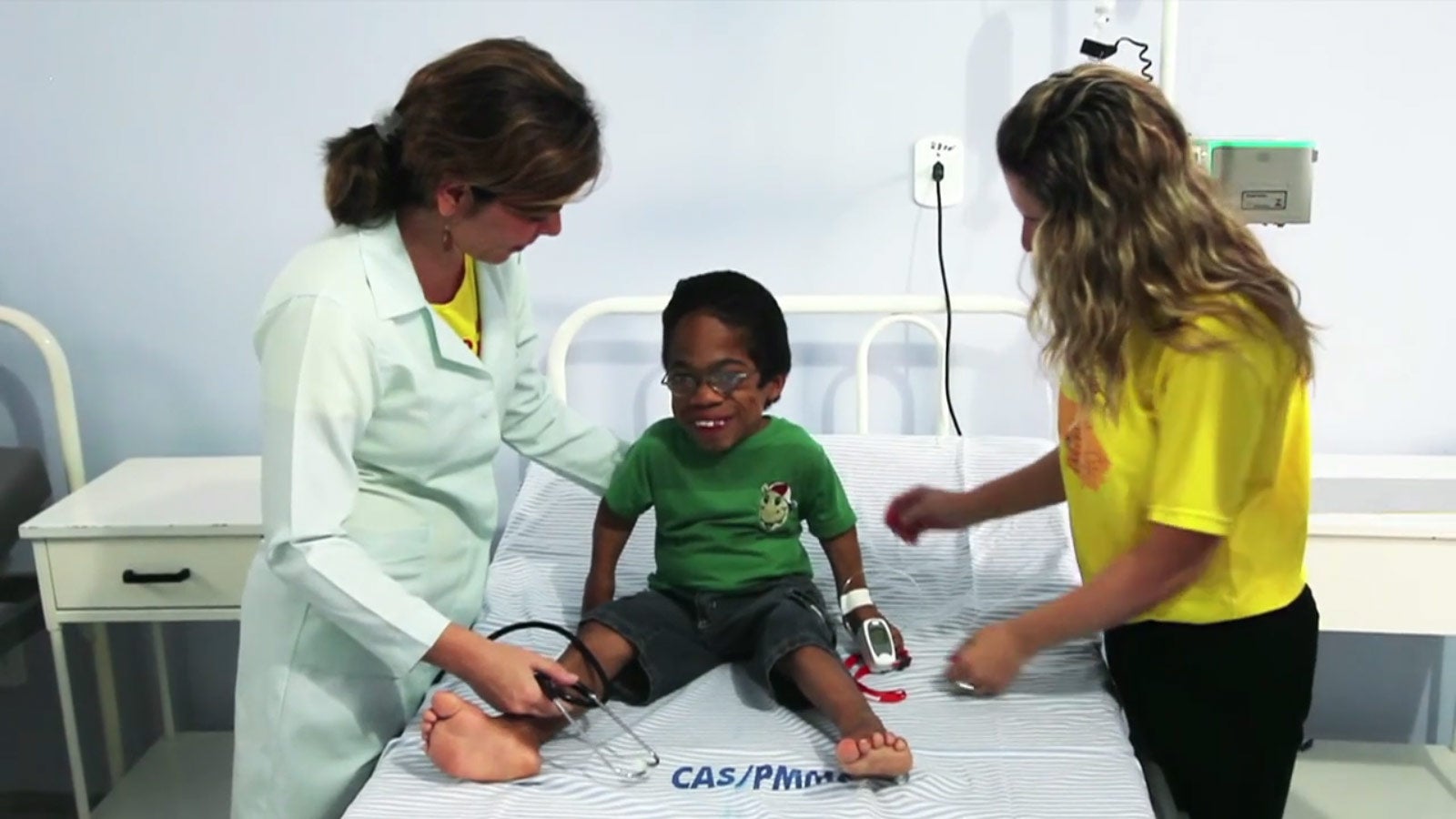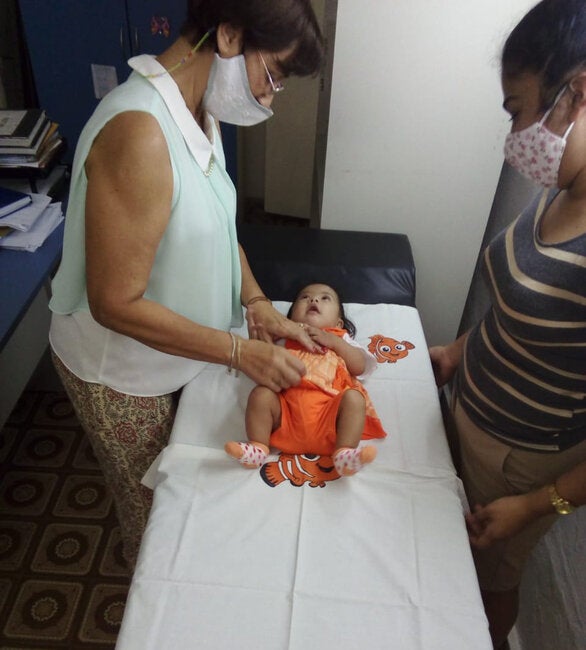Montevideo, March 3, 2021 (CLAP/PAHO) – For Marta Ascurra, director of Paraguay’s National Congenital Defects Prevention Program, understanding the prevalence of congenital defects is essential. "If you have no data, if the frequency and type of congenital defect in newborns in a population is unknown, how are we going to know or say what to do?" she asks. By monitoring these anomalies, she says, "public policies for detection, diagnosis, early treatment, habilitation, rehabilitation and prevention can be generated."
"Usually, when we see a person with a congenital defect we are unaware of what it entails,” continues Ascurra, whose program was created in 2015 with support from the Pan American Health Organization (PAHO). “Disseminating information and training health professionals is vital. Through early detection, we can improve the quality of life for that child and his or her family."
Congenital defects are leading causes of infant mortality worldwide, and in the Americas, approximately one out of every ten deaths of children under five is due to these anomalies. To meet this serious health challenge, a program directed by Ascurra is being implemented in Paraguay under the auspices of the Ministry of Health. The program’s slogan: “Preventing, detecting, and treating newborns with congenital defects is in your hands.”
The program’s first focus was creation of a registry of congenital defects in order to determine their prevalence and generate policies in line with the needs of the population. Thus, it was learned that neural tube defects and oral fissures are among the most common congenital defects. Those defects can be prevented by giving women folic acid at least two months before gestation.
Both urban and rural hospitals in Paraguay participate in the registry. By counseling those responsible for the care of the newborn, the surveillance systems also help health professionals make diagnoses and communicate them to parents. This is the second axis of the program.
"In a rural environment, the birth of a baby with a congenital defect is often the first case that the professional sees, and that doctor is the one who is going to present the baby to the mother,” Ascurra said. “We can support [the doctor] and reach out to the mother through him. It is important to convey to her that she is not alone, that we can help her."
Ascurra explains that the third point of the program is the "little foot test," a simple test that consists of a prick in the heel of the newborn to extract a blood sample for detection and early treatment of pathologies such as congenital hypothyroidism; with detection and early treatment, the serious mental disabilities that this condition can cause can be avoided. "This can only be reversed one hundred percent if treatment is provided in the first days of life," Ascurra said.
Roberto Giugliani is a Brazilian geneticist who in 1982 founded the Medical Genetics Service at the Hospital de Clínicas in Porto Alegre, Brazil. In 2004, this institution became a WHO collaborating center for the development of medical genetics services with the aim of supporting new services to be installed in Latin America.
The collaborating center offers courses in human and medical genetics and training in congenital defects. Giugliani reports that they have trained thousands of people in more than 20 countries. In Brazil they work on disseminating information on birth defects and diagnostic support and offer a laboratory for testing. They also have a birth defects monitoring area linked to the Latin American Collaborative Study of Congenital Malformations (ECLAMC), created in 1967 with PAHO support, a pioneering initiative that promoted the development of these registries in the countries of the region.
For Giugliani, it is important to know which are the most prevalent defects in a population and "monitor the presence of risk factors for their control and prevention." He points out an example of Brazil, where cases of defects were associated with consumption of thalidomide by pregnant women, a drug initially used in the 1960s and banned in most countries because it can cause significant malformations in fetuses. "In Brazil, this drug is used in the treatment of Hansen's disease (leprosy),” he said. “Cases of congenital defects associated with [the drug’s] ingestion during pregnancy have been identified and we are trying to control it so that they no longer occur."
For this Brazilian physician, it is important to provide an integral and multidisciplinary service, which gives the person with a congenital defect customized care. "In Brazil, for example, which has a population of 210 million people, it is estimated that about 13 million have a rare disease. It is a significant number and we need to give them attention. Congenital defects require multidisciplinary care."
Willingness and leadership
Both Giugliani and Ascurra believe that a fundamental factor in surveillance of congenital defects is leadership, as well as organization and dedication to systematically registering cases, an activity that depends on the willingness and responsibility of professionals who receive these children in their offices. Hence the importance of training and sensitization of professionals.
"Providing adequate care determines the future of that newborn and whether he or she can develop all the potential with which he or she was born," Ascurra, says. "Everyone has potential, no matter if he or she was born with a congenital defect, and can develop it to the extent that he or she is given the possibility."
Ascurra emphasizes that "by detecting it as early as possible we can change the life of that child, his family, the community and the country itself. We must have and work on a national registry to reduce the situations of inequity, poverty, discrimination and lack of inclusion that surround these people."
PAHO encourages regional countries to promote policies to provide a better quality of life for people with congenital birth defects and support their families. In this regard, PAHO's Latin American Center for Perinatology and Women's Health (CLAP) provides technical cooperation to strengthen surveillance systems in the countries of the region.
In the last five years, PAHO has worked to strengthen networks with experts, institutions and actors in the different areas related to surveillance, diagnosis and follow-up of newborns with congenital defects.
For Pablo Durán, PAHO's regional advisor on perinatal health, "the training for country leaders, the extensive network forged through the use of communication technologies and the addition of more countries to this process year after year are extremely encouraging results and, at the same time, a great commitment to continue advancing on the road to providing quality care to each newborn and their families".
In Latin America, Argentina, Bolivia, Brazil, Colombia, Costa Rica, Cuba, Dominican Republic, El Salvador, Guatemala, Honduras, Mexico, Panama, Paraguay, Uruguay and Venezuela have a birth defects surveillance system.






